#Anna Keum
Explore tagged Tumblr posts
Text
youtube
Plume (2019) [6 min] by Zhang Xun, Camille Alonzi, Jerry Wang, Amy Ou, Yoni Shalom, Corinne Roy, Anna Keum, Meaghan Hettler, Dani Elizondo, Taylor Stilwell and Alex Phillip | Canada
#Stop Motion#2019#6 min#Zhang Xun#Camille Alonzi#Jerry Wang#Amy Ou#Yoni Shalom#Corinne Roy#Anna Keum#Meaghan Hettler#Dani Elizondo#Taylor Stilwell#Alex Phillip#Canada#Animated Short#AnimatedShortOfTheDay#Animation#Nature#Insects#Moth#Beetle#Cute#Sheridan College#Fiddlehead Animation Studio#Youtube
1 note
·
View note
Text
The Books I Read in 2022
La masonería. Historia e iniciación, por Christian Jacq (1975) [tr. Manuel Serrat Crespo, 2006]
La interculturalitat, per Joaquín Beltrán (2005)
No em deixis mai, per Kazuo Ishiguro (2005) [tr. Xavier Pàmies, 2005]
El Mundo Clásico. Por qué importa, por Neville Morley (2018) [tr. Antonio Guzmán Guerra, 2019]
Mis chistes, mi filosofía, por Slavoj Žižek (2014) [tr. Damià Alou, 2015]
Cómo ser un estoico. Utilizar la filosofía antigua para vivir una vida moderna, por Massimo Pigliucci (2017) [tr. Francisco García Lorenzana, 2018]
Filosofía: ¿Por qué importa?, por Helen Beebee y Michael Rush (2019) [tr. Irene Riaño de Hoz, 2021]
La nova innocència, per Raimon Panikkar (1998)
Silencio, por Shûsaku Endô (1966) [tr. Jaime Fernández y José Miguel Vara, 1988]
1984. La novela gráfica, por George Orwell [historia] y Fido Nesti [ilustración y adaptación] (2020) [tr. Miguel Temprano García, 2013]
Qué es el Tao, por Alan Watts (2000) [tr. David González Raga, 2010]
La autopista, Akira #1, por Katsuhiro Otomo (1984) [tr. E.S. Abulí]
La ciudad de los saqueadores, La leyenda demadre Sarah #1, por Katsuhiro Otomo y Takumi Nagayasu (1990) [tr. Olinda Cordukes, 2008]
La ciudad de los niños, La leyenda demadre Sarah #2, por Katsuhiro Otomo y Takumi Nagayasu (1991) [tr. Olinda Cordukes, 2008]
La ciudad de los ángeles, La leyenda de madre Sarah #3, por Katsuhiro Otomo y Takumi Nagayasu (1993) [tr. Olinda Cordukes, 2008]
La ciudad de la paz (Primera parte), La leyenda de madre Sarah #4, por Katsuhiro Otomo y Takumi Nagayasu (1997) [Olinda Cordukes, 2008]
La ciudad de la paz (Segunda parte), La leyenda de madre Sarah #5, por Katsuhiro Otomo y Takumi Nagayasu (1997) [Olinda Cordukes, 2008]
Blue Like Jazz. Nonreligious Thoughts on Christian Spirituality, by Donald Miller (2003)
La ciudad del futuro (Primera parte), La leyenda de madre Sarah #6, por Katsuhiro Otomo y Takumi Nagayasu (1998) [Olinda Cordukes, 2008]
La ciudad del futuro (Segunda parte), La leyenda de madre Sarah #6, por Katsuhiro Otomo y Takumi Nagayasu (1998) [Olinda Cordukes, 2008]
El despertar, Akira #2, por Katsuhiro Otomo (1985) [tr. E.S. Abulí, 1999]
Revelaciones, Akira #3, por Katsuhiro Otomo (1985) [tr. E.S. Abulí, 1999]
El emperador del caos, Akira #4, por Katsuhiro Otomo (1993) [tr. E.S. Abulí, 2000]
Venganzas, Akira #5, por Katsuhiro Otomo (1990) [tr. E.S. Abulí, 2000]
Reconstrucción, Akira #6, por Katsuhiro Otomo (1985) [tr. E.S. Abulí, 2000]
Homo videns. La sociedad teledirigida, por Giovanni Sartori (1997) [tr. Ana Díaz Soler, 1998]
Gilgamesh (c. 2100 – 1200 bce), versión de Stephen Mitchell (2004) [tr. Javier Alonso López, 2008]
Hierba, por Keum Suk Gendry-Kim (2017) [tr. Joo Hasun, 2022]
La vida il·lustrada, per Lisa Aisato (2019) [tr. Anna Jolis Olivé, 2020]
El budisme, per Joan Leita (1991)
The Miseducation of Cameron Post, by Emily M. Danforth (2012)
Flip It Like This!, by David Hayward (2022)
‘The Picture of Dorian Gray’ and Three Stories (‘The Happy Prince’, ‘The Birthday of the Infanta’, ‘Lord Arthur Saville’s Crime’), by Oscar Wilde (c. 1890) [eds. Gary Schmidgall & Peter Raby, 1995/2007]
Lord of the Flies, by William Golding (1954) [introduction by Stephen King, 2011]
The First Christmas: What the Gospels Really Teach Us About Jesus’ Birth, by Marcus J. Borg & John Dominic Crossan (2007)
See other year’s reading lists.
Follow me on Goodreads.
4 notes
·
View notes
Text
James Donaldson on Mental Health - Suicide Rates Among Asian American and Pacific Islander Youths—A Cause for Alarm

James Donaldson on Mental Health - Suicide Rates Among Asian American and Pacific Islander Youths—A Cause for Alarm Photo by Mental Health America (MHA) on Pexels.com Anthony L. Bui, MD, MPH Anna S. Lau, PhD Suicide is the leading cause of death for Asian American and Pacific Islander youths.1 Asian American individuals are the fastest growing racial group in the United States, and Native Hawaiian and Pacific Islander individuals are the third fastest. Despite the critical importance of preventing suicide among this growing population, the study of mental health among Asian American and Pacific Islander populations has been historically understudied and underfunded nationally.2 Elsewhere in JAMA Network Open, Keum et al3 present a cross-sectional analysis examining trends in suicide rates among Asian American and Pacific Islander youths aged 10 to 19 years. Utilizing national mortality data from the National Center for Health Statistics, the authors calculate crude suicide rates across male and female groups and conduct a trend analysis to assess annual percent changes. The authors found that Asian American and Pacific Islander youth suicide rates have been increasing. In 2021, the Asian American and Pacific Islander male and female youth suicide rates were 6.49 and 3.72 per 100?000 individuals, respectively. The authors found large increases in suicide rates from 1999 to 2021, with a 72% increase in youth suicide rates for males and 125% increase for females during the 22-year period. They detected that Asian American and Pacific Islander male and female youths experienced growth in suicide rates, starting in 2009 and 2004 and peaking in 2019 and 2020, respectively. The findings of this study bring up several important points for discussion. First, the rise of Asian American and Pacific Islander youth suicide rates is alarming and coincides with a growing increase in anti-Asian hate and xenophobia, including hate incidents, verbal abuse, and cyberbullying, seen during this period.4 Structural, institutional, and interpersonal racism contribute to harm youths. Notably, oppression, marginalization, and erasure of culture may contribute to accelerating risk of suicide seen in Native Hawaiian and Pacific Islander adolescents, who have higher odds of suicide attempts compared with White peers.5 The lethality of risks are further exacerbated by the prevailing model minority stereotype, in which Asian American and Pacific Islander youths are all generalized to be academically exceptional, socially mobile, diligent, and well-adjusted. This stereotype was born out of political motivation to deny the current conditions and persistent legacy of racism, conveying that through hard work all people can succeed in a country that functions as a meritocracy. This ideological device is used to deter coalitions for racial justice among minoritized groups against systems of disadvantage. It also belies minority stress experiences that affect Asian American and Pacific Islander youths and renders invisible forms of distress and mental health needs. One by-product of this invisibility is the under recognition of depression and suicide risk. Previous studies have shown that Asian American youths with need are less likely to seek out mental health care and utilize school-based services or psychotropic medications compared with youths who belong to other racial and ethnic groups. Large disparities in treatment are even observed among youths who received emergency attention for acute psychiatric crises (most commonly involving suicide risk), with Asian American and Pacific Islander youths being the racial group least likely to receive follow-up outpatient care.6 Help-seeking barriers include family and individual stigma and limited mental health literacy, but these individual factors interact with structural barriers, resulting in a profound lack of accessible culturally and linguistically responsive services for Asian American and Pacific Islander communities. Second, the authors3 note important patterns as a function of sex. Although Asian American and Pacific Islander male youths have higher suicide rates compared with female youths, Asian American and Pacific Islander female youths have seen larger increases in the rates during the study period. We agree with the authors that culturally rooted and gendered family roles may contribute to the higher suicide rates among Asian American and Pacific Islander male youths, while worsening intersectional discrimination from sexism and racism may contribute to the growing rates among Asian American and Pacific Islander female youths. In terms of sexuality, due to the limitations of national mortality data, this study was unable to disaggregate suicide rate trends among lesbian, gay, bisexual, transgender, and queer (LGBTQ) youths, who have much higher rates of suicidal ideation and self-harm behaviors compared with heterosexual and cisgender youth.5 Intersectional minority stress may amplify these risks for Asian American and Pacific Islander sexual minority youths. It remains paramount to study prevalence, risk, and protective processes and to develop culturally responsive prevention to reduce suicide risk in this population. Third, it is imperative to assess whether increased access to firearms may be contributing to increasing rates of suicide among Asian American and Pacific Islander youths. Although suffocation remains the most common method of death by suicide among Asian American and Pacific Islander youths, this rate has been falling while use of firearms has increased sharply in recent years.1 Rates of firearm ownership, carrying, and unsafe storage have increased in Asian American and Pacific Islander households as anticipated racism-related threats have also increased since the COVID-19 pandemic with the associated rise in anti-Asian hate.7 New efforts focusing on lethal means safety, including recent federal funding opportunities, must attend to racism-related stress and need for firearm injury prevention in Asian American and Pacific Islander communities. Fourthly, this study was limited in its ability to disaggregate the Asian American and Pacific Islander population into ethnic subgroups. Combining the more than 50 ethnic subgroups among Asian American and Pacific Islander individuals as a monolithic group undermines the heterogenous diversity and understanding of specific disparities among ethnic subgroups. It is important that future studies, public surveillance programs, and policy and advocacy efforts disaggregate Asian American and Pacific Islander subgroups to prioritize prevention efforts and facilitate culturally tailored solutions to youth suicide reduction. Lastly, the paucity of funding dedicated to Asian American and Pacific Islander mental health research is worrisome. Implicit and explicit biases and Asian American and Pacific Islander invisibility contribute to low investments from federal research and service funding mechanisms.2 The pervasive and harmful nature of the model minority stereotype has likely undermined the allocation of resources to study and serve this population and worsened inequities. Moreover, epidemiologic surveys have inadequate inclusion of Asian American and Pacific Islander populations to generate estimates of prevalence and incidence.4 We suspect that the recent rise in suicide rates among Asian American and Pacific Islander youths may be attributable to increased racialized stress, anti-immigrant sentiment, and Asian hate; escalating societal pressures on adolescents to achieve; and increased access to firearms. Although research on Asian American and Pacific Islander youth mental health has typically focused on cultural determinants, such as parent-child acculturation gaps in immigrant families or cultural values that shape family communication or achievement stress, we do not focus on these cultural deficit explanations. There is little reason to believe that marked changes to family processes or cultural heritage factors have occurred in recent years that can account for Asian American and Pacific Islander youth suicide rates peaking in 2020. Unfortunately, this increased need among Asian American and Pacific Islander youths has far outstripped the availability of culturally responsive mental health interventions. Asian American and Pacific Islander individuals deserve greater attention and representation in the science of mental health, suicide prevention, and health equity. To curb the worsening youth suicide rates seen in Asian American and Pacific Islander communities, we need meaningful investments in research along the translational spectrum, intentional workforce development of clinicians prepared to serve the Asian American and Pacific Islander community across youth sectors of care, improved surveillance, and culturally tailored, evidence-based, community-based interventions to support Asian American and Pacific Islander youth mental health. #James Donaldson notes:Welcome to the “next chapter” of my life… being a voice and an advocate for #mentalhealthawarenessandsuicideprevention, especially pertaining to our younger generation of students and student-athletes.Getting men to speak up and reach out for help and assistance is one of my passions. Us men need to not suffer in silence or drown our sorrows in alcohol, hang out at bars and strip joints, or get involved with drug use.Having gone through a recent bout of #depression and #suicidalthoughts myself, I realize now, that I can make a huge difference in the lives of so many by sharing my story, and by sharing various resources I come across as I work in this space. #http://bit.ly/JamesMentalHealthArticleFind out more about the work I do on my 501c3 non-profit foundationwebsite www.yourgiftoflife.org Order your copy of James Donaldson's latest book,#CelebratingYourGiftofLife: From The Verge of Suicide to a Life of Purpose and Joy Link for 40 Habits Signupbit.ly/40HabitsofMentalHealth If you'd like to follow and receive my daily blog in to your inbox, just click on it with Follow It. Here's the link https://follow.it/james-donaldson-s-standing-above-the-crowd-s-blog-a-view-from-above-on-things-that-make-the-world-go-round?action=followPub www.celebratingyourgiftoflife.com Photo by Mental Health America (MHA) on Pexels.com Read the full article
1 note
·
View note
Text
BOX D (ART SUPPLIES, BOOKS, KITCHEN, MISCELLANEOUS, SENTIMENTAL ITEMS)
BUTTER KNIVES
CAKE DECORATING TIPS
CALLIOPE BY JEANANN VERLEE
CAN TOPS (2)
CONSTRUCTIVE ANATOMY BY GEORGE B. BRIDGMAN
COOKIE CUTTERS
COOKING THERMOMETER
DAMAGE FREE WALL HANGING STRIPS (2 PACKAGES)
DINNER FORKS
DINNER SPOONS
FROSTING KNIFE
FUNNELS (2)
GRASS BY KEUM SUK GENDRY-KIM
HEARTBEAT 100 BY CASSIDY BLACK
HIGH SCHOOL YEAR BOOK
HURRICANE MOUTH BY AMANDA OAKS
JULIET HAS A GUN PERFUME SAMPLE SET
KITCHEN TOWELS (4)
MEDICAL SHARPS BIN
MY DARK VANESSA BY KATE ELIZABETH RUSSELL
NATIONAL STUDENT POETS PROGRAM 2014 BOOKLET
NICOLE ANGEMI’S ANATOMY BOOK
OIL PAINTS
PALETTE KNIVES
PLASTIC PAINT CASE
PREDATORS BY ANNA SALTER
RUBY BY CYNTHIA BOND
SALAD FORKS
SCRUBBING BRUSH
SILICONE GRIP
THE BODY FANTASTIC BY FRANK GONZALEZ-CRUSSI
THE BOOK OF SKELETONS BY RACHEL VIGIER
THE PEOPLE WE KEEP BY ALLISON LARKIN
TOO MUCH BY RACHEL VORONA COTE
TUPPERWARE CONTAINERS (4)
TURQUOISE WAFFLE BLANKET
WASTED BY MARYA HORNBACHER
WASTELAND BY FRANCESCA LIA BLOCK
WOODEN HOPE CHEST
0 notes
Text
Dreamcasting Broadway: LEGALLY BLONDE



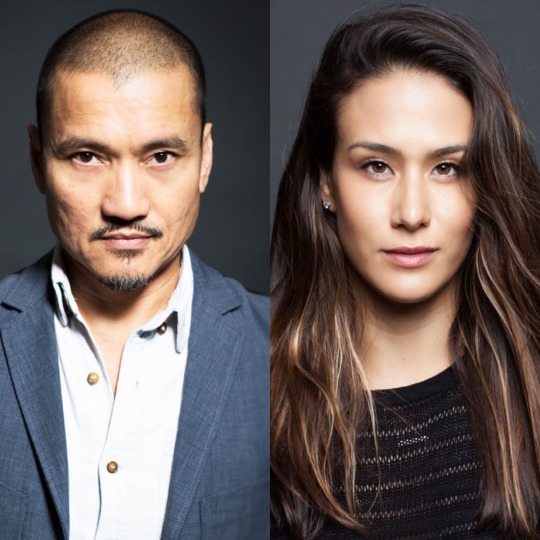

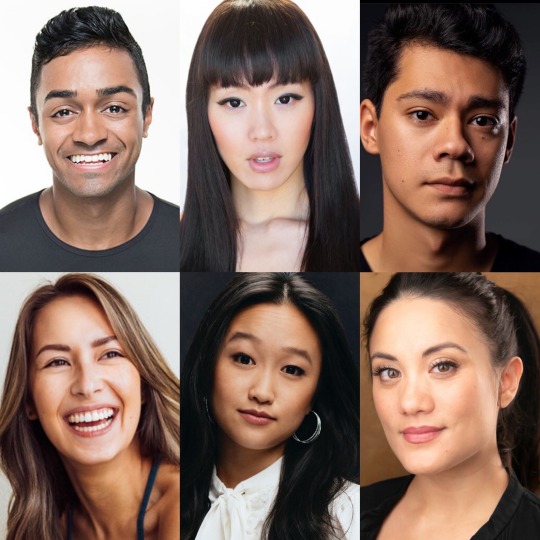
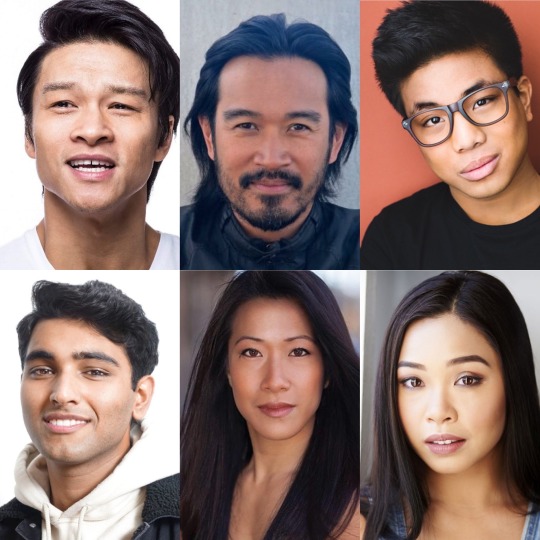
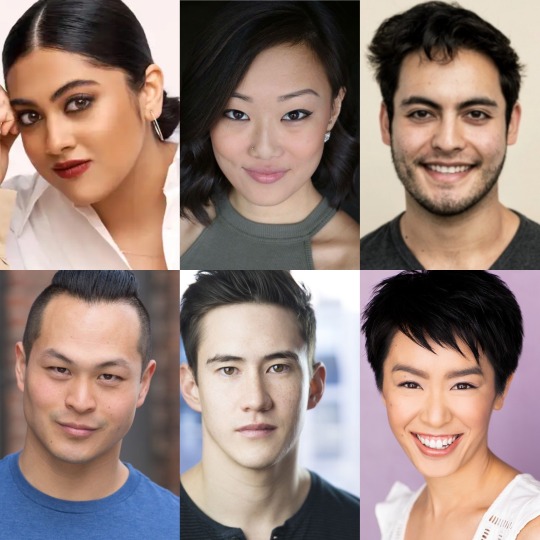
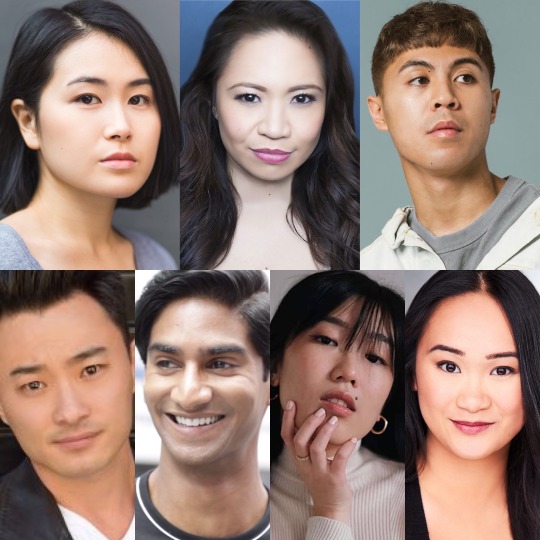
“You thought I was dumb, but I think that somebody’s judgement was poor!”
Dreamcasting Broadway: Legally Blonde
Ashley Park as Elle Woods
Cheech Manohar as Emmett Forrest
Lea Salonga as Paulette Bonafonté
Devin Ilaw as Warner Huntington III
Stephanie Jae Park as Vivienne Kensington
Jon Jon Briones as Professor Callahan
Ericka Hunter as Brooke Wyndham
Catherine Ricafort as Serena
Marina Kondo as Pilar
Krystina Alabado as Margot (Elle u/s)
Adam Ali-Perez as Carlos/Lowell/Ensemble
Anna-Lee Wright as Judge/Store Manager/Ensemble (Paulette u/s)
Augustine Nguyen as Aaron Schultz/Guard/Ensemble (Emmett u/s)
Cailen Fu as Cece/Whitney/Ensemble (Elle u/s, Margot u/s)
Cathy Ang as Kate/Chutney/Ensemble (Enid u/s)
Diane Phelan as Leilani/Ensemble (Vivienne u/s, Pilar u/s)
Ethan Le Phong as Pforzheimer/Ensemble (Emmett u/s)
Eymard Cabling as Elle’s Dad/Winthrop/Ensemble (Callahan u/s)
Jon Viktor Corpuz as Ensemble
Kabir Bery as Sundeep Padamadan/Ensemble
Kay Trinidad as Elle’s Mom/Courtney/Ensemble (Paulette u/s)
Kimberly-Ann Truong as Kristine/Ensemble
Kuhoo Verma as Enid Hoopes/Veronica/Ensemble
Lina Lee as Shandi/Ensemble (Brooke u/s, Margot u/s)
Max B. Ehrlich as Nikos/Beer Bash Dancer/Ensemble (Warner u/s)
Paul HeeSang Miller as Kyle/Dewey/Grandmaster Chad/Ensemble (Warner u/s)
Warren Yang as Ensemble
Yvette Lu as Gabby/Stenographer/Ensemble
Amy Keum as Swing (Vivienne u/s, Serena u/s)
Carol Angeli as Swing (Brooke u/s, Pilar u/s)
Hugh Aparnente as Swing
Marcus Shane as Swing
Michael Maliakel as Swing (Callahan u/s)
Viveca Chow as Swing (Enid u/s)
Andrea Macasaet as Elle Woods (alternate)
The concept behind this dreamcast comes from a TikTok I came across by user @/thekarlypaige a couple of days ago that has stuck with me for days now. I’ll link it below, but essentially, Legally Blonde through an Asian lens, touching on the “model minority” myth and showing that Asian people can’t be stereotyped into a singular experience. It’s high time for a Legally Blonde revival and I think looking at the material through a new lens would be a great way to revive this fun piece!
https://vm.tiktok.com/TTPdryLVJs/
#dreamcasting#dreamcasting broadway#legally blonde#laurence o'keefe#nell benjamin#heather hach#ashley park#cheech manohar#lea salonga#devin ilaw#stephanie jae park#jon jon briones#ericka hunter#catherine ricafort#marina kondo#krystina alabado#andrea macasaet#broadway#broadway theatre#broadway musical#musical#musical theatre#theatre
5 notes
·
View notes
Text
James Donaldson on Mental Health - Suicide Rates Among Asian American and Pacific Islander Youths—A Cause for Alarm

James Donaldson on Mental Health - Suicide Rates Among Asian American and Pacific Islander Youths—A Cause for Alarm Photo by Mental Health America (MHA) on Pexels.com Anthony L. Bui, MD, MPH Anna S. Lau, PhD Suicide is the leading cause of death for Asian American and Pacific Islander youths.1 Asian American individuals are the fastest growing racial group in the United States, and Native Hawaiian and Pacific Islander individuals are the third fastest. Despite the critical importance of preventing suicide among this growing population, the study of mental health among Asian American and Pacific Islander populations has been historically understudied and underfunded nationally.2 Elsewhere in JAMA Network Open, Keum et al3 present a cross-sectional analysis examining trends in suicide rates among Asian American and Pacific Islander youths aged 10 to 19 years. Utilizing national mortality data from the National Center for Health Statistics, the authors calculate crude suicide rates across male and female groups and conduct a trend analysis to assess annual percent changes. The authors found that Asian American and Pacific Islander youth suicide rates have been increasing. In 2021, the Asian American and Pacific Islander male and female youth suicide rates were 6.49 and 3.72 per 100?000 individuals, respectively. The authors found large increases in suicide rates from 1999 to 2021, with a 72% increase in youth suicide rates for males and 125% increase for females during the 22-year period. They detected that Asian American and Pacific Islander male and female youths experienced growth in suicide rates, starting in 2009 and 2004 and peaking in 2019 and 2020, respectively. The findings of this study bring up several important points for discussion. First, the rise of Asian American and Pacific Islander youth suicide rates is alarming and coincides with a growing increase in anti-Asian hate and xenophobia, including hate incidents, verbal abuse, and cyberbullying, seen during this period.4 Structural, institutional, and interpersonal racism contribute to harm youths. Notably, oppression, marginalization, and erasure of culture may contribute to accelerating risk of suicide seen in Native Hawaiian and Pacific Islander adolescents, who have higher odds of suicide attempts compared with White peers.5 The lethality of risks are further exacerbated by the prevailing model minority stereotype, in which Asian American and Pacific Islander youths are all generalized to be academically exceptional, socially mobile, diligent, and well-adjusted. This stereotype was born out of political motivation to deny the current conditions and persistent legacy of racism, conveying that through hard work all people can succeed in a country that functions as a meritocracy. This ideological device is used to deter coalitions for racial justice among minoritized groups against systems of disadvantage. It also belies minority stress experiences that affect Asian American and Pacific Islander youths and renders invisible forms of distress and mental health needs. One by-product of this invisibility is the under recognition of depression and suicide risk. Previous studies have shown that Asian American youths with need are less likely to seek out mental health care and utilize school-based services or psychotropic medications compared with youths who belong to other racial and ethnic groups. Large disparities in treatment are even observed among youths who received emergency attention for acute psychiatric crises (most commonly involving suicide risk), with Asian American and Pacific Islander youths being the racial group least likely to receive follow-up outpatient care.6 Help-seeking barriers include family and individual stigma and limited mental health literacy, but these individual factors interact with structural barriers, resulting in a profound lack of accessible culturally and linguistically responsive services for Asian American and Pacific Islander communities. Second, the authors3 note important patterns as a function of sex. Although Asian American and Pacific Islander male youths have higher suicide rates compared with female youths, Asian American and Pacific Islander female youths have seen larger increases in the rates during the study period. We agree with the authors that culturally rooted and gendered family roles may contribute to the higher suicide rates among Asian American and Pacific Islander male youths, while worsening intersectional discrimination from sexism and racism may contribute to the growing rates among Asian American and Pacific Islander female youths. In terms of sexuality, due to the limitations of national mortality data, this study was unable to disaggregate suicide rate trends among lesbian, gay, bisexual, transgender, and queer (LGBTQ) youths, who have much higher rates of suicidal ideation and self-harm behaviors compared with heterosexual and cisgender youth.5 Intersectional minority stress may amplify these risks for Asian American and Pacific Islander sexual minority youths. It remains paramount to study prevalence, risk, and protective processes and to develop culturally responsive prevention to reduce suicide risk in this population. Third, it is imperative to assess whether increased access to firearms may be contributing to increasing rates of suicide among Asian American and Pacific Islander youths. Although suffocation remains the most common method of death by suicide among Asian American and Pacific Islander youths, this rate has been falling while use of firearms has increased sharply in recent years.1 Rates of firearm ownership, carrying, and unsafe storage have increased in Asian American and Pacific Islander households as anticipated racism-related threats have also increased since the COVID-19 pandemic with the associated rise in anti-Asian hate.7 New efforts focusing on lethal means safety, including recent federal funding opportunities, must attend to racism-related stress and need for firearm injury prevention in Asian American and Pacific Islander communities. Fourthly, this study was limited in its ability to disaggregate the Asian American and Pacific Islander population into ethnic subgroups. Combining the more than 50 ethnic subgroups among Asian American and Pacific Islander individuals as a monolithic group undermines the heterogenous diversity and understanding of specific disparities among ethnic subgroups. It is important that future studies, public surveillance programs, and policy and advocacy efforts disaggregate Asian American and Pacific Islander subgroups to prioritize prevention efforts and facilitate culturally tailored solutions to youth suicide reduction. Lastly, the paucity of funding dedicated to Asian American and Pacific Islander mental health research is worrisome. Implicit and explicit biases and Asian American and Pacific Islander invisibility contribute to low investments from federal research and service funding mechanisms.2 The pervasive and harmful nature of the model minority stereotype has likely undermined the allocation of resources to study and serve this population and worsened inequities. Moreover, epidemiologic surveys have inadequate inclusion of Asian American and Pacific Islander populations to generate estimates of prevalence and incidence.4 We suspect that the recent rise in suicide rates among Asian American and Pacific Islander youths may be attributable to increased racialized stress, anti-immigrant sentiment, and Asian hate; escalating societal pressures on adolescents to achieve; and increased access to firearms. Although research on Asian American and Pacific Islander youth mental health has typically focused on cultural determinants, such as parent-child acculturation gaps in immigrant families or cultural values that shape family communication or achievement stress, we do not focus on these cultural deficit explanations. There is little reason to believe that marked changes to family processes or cultural heritage factors have occurred in recent years that can account for Asian American and Pacific Islander youth suicide rates peaking in 2020. Unfortunately, this increased need among Asian American and Pacific Islander youths has far outstripped the availability of culturally responsive mental health interventions. Asian American and Pacific Islander individuals deserve greater attention and representation in the science of mental health, suicide prevention, and health equity. To curb the worsening youth suicide rates seen in Asian American and Pacific Islander communities, we need meaningful investments in research along the translational spectrum, intentional workforce development of clinicians prepared to serve the Asian American and Pacific Islander community across youth sectors of care, improved surveillance, and culturally tailored, evidence-based, community-based interventions to support Asian American and Pacific Islander youth mental health. #James Donaldson notes:Welcome to the “next chapter” of my life… being a voice and an advocate for #mentalhealthawarenessandsuicideprevention, especially pertaining to our younger generation of students and student-athletes.Getting men to speak up and reach out for help and assistance is one of my passions. Us men need to not suffer in silence or drown our sorrows in alcohol, hang out at bars and strip joints, or get involved with drug use.Having gone through a recent bout of #depression and #suicidalthoughts myself, I realize now, that I can make a huge difference in the lives of so many by sharing my story, and by sharing various resources I come across as I work in this space. #http://bit.ly/JamesMentalHealthArticleFind out more about the work I do on my 501c3 non-profit foundationwebsite www.yourgiftoflife.org Order your copy of James Donaldson's latest book,#CelebratingYourGiftofLife: From The Verge of Suicide to a Life of Purpose and Joy Link for 40 Habits Signupbit.ly/40HabitsofMentalHealth If you'd like to follow and receive my daily blog in to your inbox, just click on it with Follow It. Here's the link https://follow.it/james-donaldson-s-standing-above-the-crowd-s-blog-a-view-from-above-on-things-that-make-the-world-go-round?action=followPub www.celebratingyourgiftoflife.com Photo by Mental Health America (MHA) on Pexels.com Read the full article
1 note
·
View note